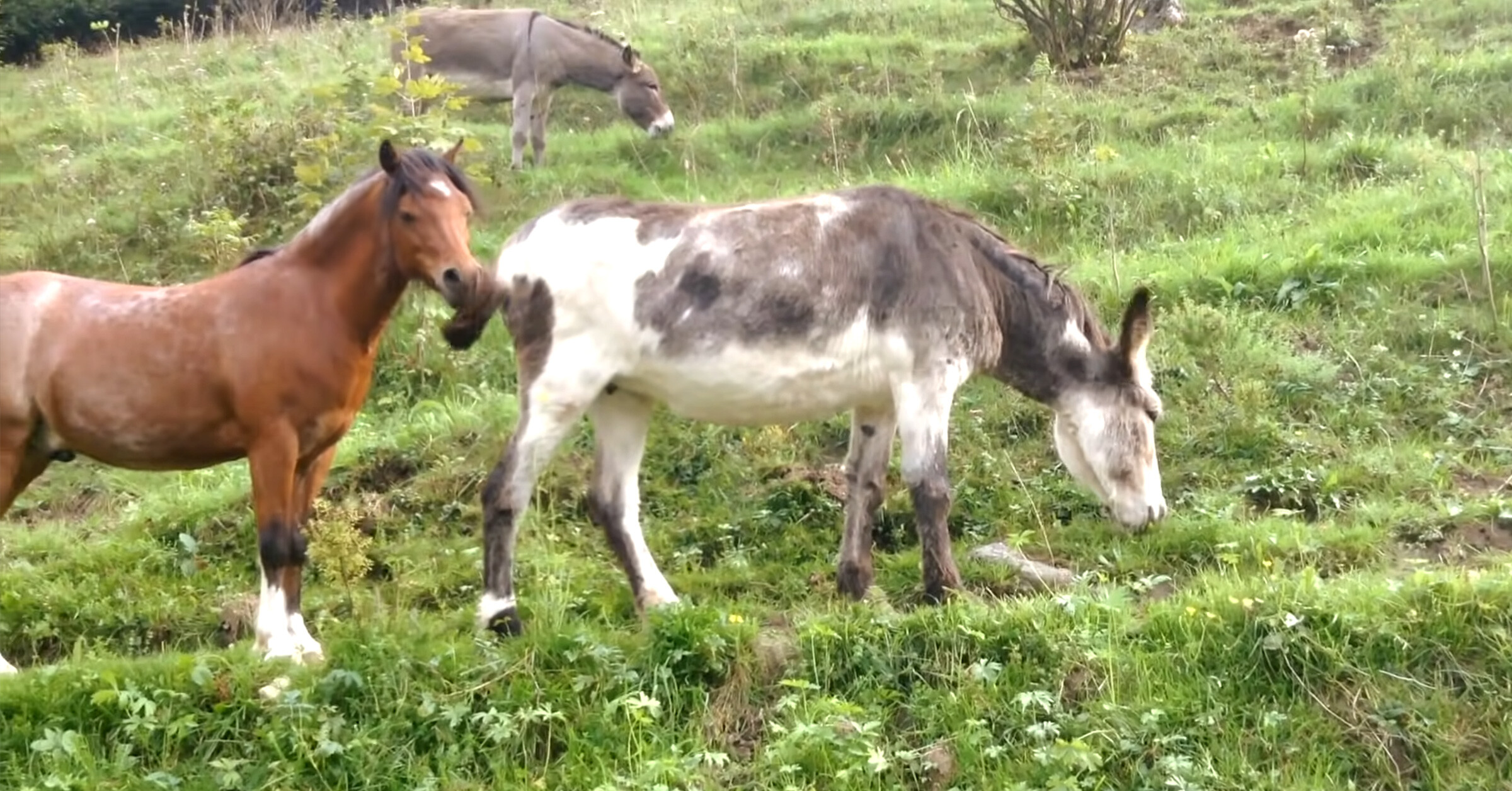Donkeys today come in all shapes, sizes, colors, and coat texture. The most common coat color is grey, followed by brown and then black, roan, and broken colored donkeys (a combination of brown and white or black and white markings) and the rarest color is pure white.

The one in our video is black and white, and it may look like it was the result of a donkey that fell in love with a cow. Many different colors, sizes, and shapes of donkeys can be seen around the world but the most noticeable is probably the difference between the resident herd and the Poitou donkeys. They originate from France and stand at 14 to 15 hands, they have a thick coat that traditionally is matted and tangled and is a brown bay in color.

There is a tendency to treat donkeys as if they are small horses, but donkeys are different! Donkeys are not like horses; they differ physically, mentally, and emotionally.

Although millions of years ago donkeys and horses had the same ancestors they have evolved to be very different species and understanding those differences is of vital importance to the care and welfare of donkeys. There are two distinct species of wild donkeys: the Asiatic branch of the species came from an area stretching from the Red Sea to Northern India and Tibet where the ass had to adapt to different climates, terrain, and altitude. Consequently, there is more than one type of Asiatic wild ass. The African branch of the species was found in North Africa between the Mediterranean coast and the Sahara Desert to the south of the Red Sea. There were two separate species of the African ass: the Nubian wild ass and the Somali wild ass. Our modern domesticated donkeys are all descended from these African wild asses ancestors.
Over 50 million donkeys and mules exist in the world, but despite this, the number of pure-bred animals within each breed is generally low, with several on the verge of extinction.
